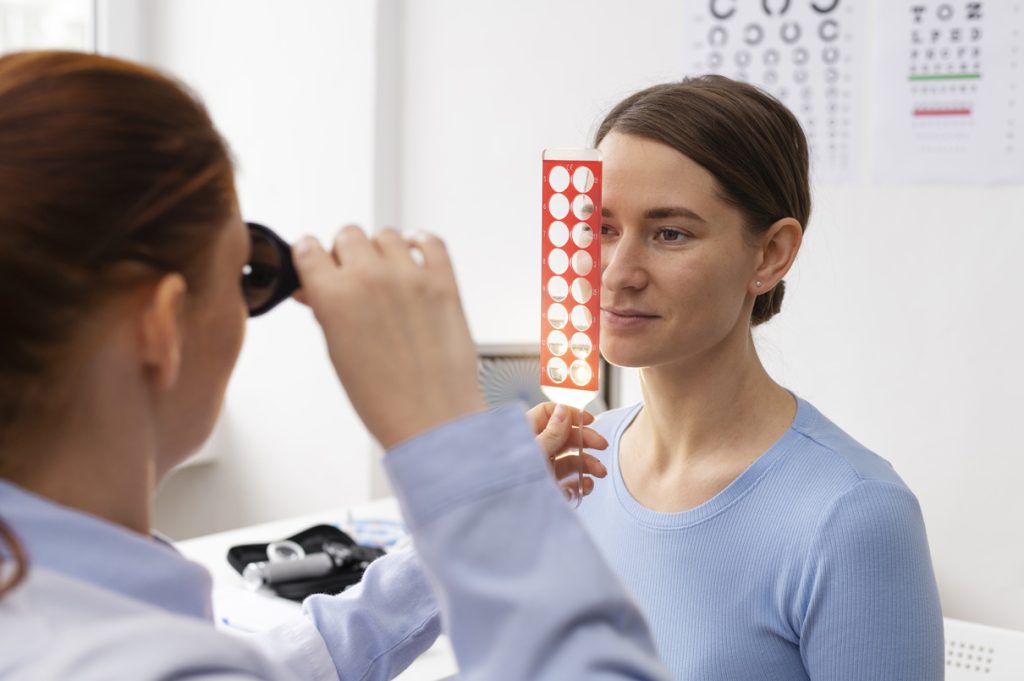The Orthoptist (Orthoptic Diagnostic Technician) is a health care professional who specializes in the evaluation, diagnosis, and rehabilitation of visual disorders, particularly those involving eye motility and coordination. He deals with problems such as strabismus, amblyopia ("lazy eye") and other binocular vision disorders. The orthoptist collaborates with the ophthalmologist in the management of eye diseases and plays a key role in visual rehabilitation.
What does an orthoptist do?
Uses specific tools and techniques to identify problems related to eye motility, binocular vision, and eye coordination.
Prescribes and performs exercises and therapies to improve visual function, correct vision problems, and prevent complications.
It works as a team with the ophthalmologist, especially in managing complex cases such as strabismus and amblyopia, and can assist him or her during examinations.
It teaches patients of all ages how to maintain good visual health and prevent or manage vision-related problems.
When to consult an orthoptist?
It is advisable to consult an orthoptist in case of:
Especially, orthoptic examinations are aimed at the identification of binocular vision abnormalities such as strabismus, amblyopia, and ocular palsy; they are aimed at pediatric patients but, also at adult patients who, for example, have visual disturbances that typically induce diplopia, visual field alterations, or postural alterations and consequently require orthoptic treatment for visual rehabilitation.
What does orthoptic evaluation consist of?
Orthoptic evaluation may include several tests, including:
Orthoptic techniques include:
Orthoptic rehabilitation makes use of: Orthoptic exercises (orthoptic training and visual training), occlusions and penalizations, prism therapy, optical aids training, visual hygiene education, etc..
Orthoptic rehabilitation is aimed at the treatment of:
This is a specialized checkup that is used to assess the function of the visual system, identifying any problems such as strabismus, amblyopia (lazy eye) or difficulty in binocular vision at an early stage. It is advisable to have the first orthoptic examination around 6-8 months of age, followed by checkups at age 3 and before the start of elementary school.
What does orthoptic evaluation consist of?
Orthoptic evaluation includes a series of noninvasive tests that assess:
When is it advisable to have an orthoptic examination?
In what cases is it appropriate to anticipate the orthoptic examination?
Premature birth, Presence of strabismus or nystagmus, Lazy eye, Abnormal head position.
The importance of early diagnosis:
Early detection of any visual problems is crucial because it allows early intervention with targeted treatments, such as corrective lenses, rehabilitation exercises or, in some cases, surgery. This can prevent permanent damage to the child's ability to see.
Performance:
talk to an operator
WRITE US ON WHATSAPP
talk to an operator
CALL NOW
Phone: 035 03 91 364
E-Mail: segreteria@life-clinic.it
Specialist examinations will be conducted by:

Where we are
C/O Life Source
Via Briantea, 5 24127 Bergamo (BG)
We are located within the Life Source Pole a unique facility in quality, privacy and hospitality, easy to reach from all directions.

Agreements with Insurance and Funds: